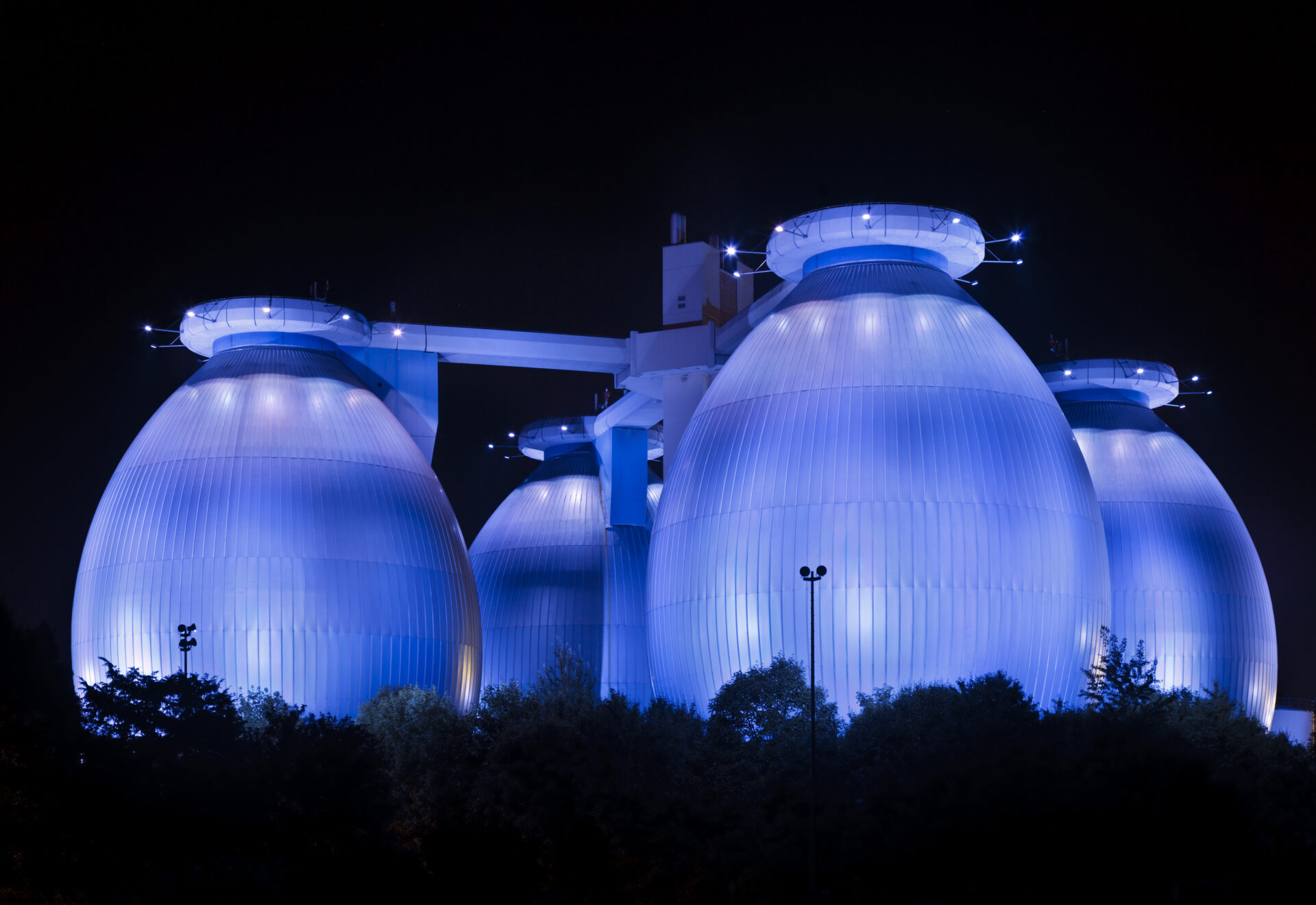

10 min lesen
October 8, 2025
The biomethane sector is entering a decisive phase. Driven by climate targets, stricter regulations, and rising demand for renewable energy, the market is experiencing rapid growth. Yet, this expansion also creates new operational challenges.
Here, digitalization plays a key role. Modern ERP systems, artificial intelligence, and IoT technologies are transforming how biogas plants are planned, managed, and connected to the natural gas grid. From supply chain optimization to predictive maintenance, digital solutions enable greater efficiency while reducing costs. For companies, this means both new opportunities and the need to rethink processes across the entire value chain.
The industry is undergoing a fundamental transformation, moving away from traditional biogas plants toward highly digitalized biomethane projects that can deliver electricity, heating, and climate-neutral gas more efficiently. Europe remains the most important market, with Germany playing a central role thanks to strong policy frameworks and targeted funding programs.
The global biomethane market has gained momentum, valued at more than USD 14 billion in 2024 and projected to exceed USD 25 billion by 2032. Biomethane production is no longer a niche but a core element of the circular economy, turning biomass, food waste, manure, and sewage sludge into sustainable energy.
Europe leads the field, with Germany, France, and the Nordics driving expansion through strong incentives and ambitious decarbonization targets. According to the European Biogas Association, over 70% of newly commissioned biomethane plants in the EU now integrate advanced digital control systems, evidence of how deeply technology is reshaping the sector.
Municipal waste and agricultural land residues remain the most important feedstock sources, while plant residues from farming add another reliable stream of organic material. For companies, this shift from traditional biogas plants to high-tech biomethane plants creates new opportunities to improve financial performance and ensure long-term competitiveness.
The regulatory framework is equally transformative. In Europe, directives such as RED II and national regulations like Germany’s EEG require strict traceability and sustainability verification across the entire production process. Key obligations include:
Meeting these requirements without digital tools is nearly impossible. Integrated ERP systems enable companies to automate data collection, manage inventory levels across feedstock supply chains, and generate compliance reports in real time. For operators, this not only secures regulatory approval but also builds trust with customers, investors, and utilities.
Modern biomethane production involves dozens of moving parts: sourcing organic waste, managing feedstock logistics, operating anaerobic digestion processes, upgrading biogas to biomethane, and finally injecting it into the natural gas grid. Coordinating all this with spreadsheets or isolated software tools is no longer feasible. Integrated ERP systems have become essential to keep operations efficient, compliant, and profitable.
At the center of this shift is SAP S/4HANA, SAP’s next-generation ERP platform. Unlike traditional ERP systems, S/4HANA runs on an in-memory database that processes large amounts of operational data in real time. For energy companies, this means instant visibility into production, supply chain, and financials. For biomethane operators, it enables quick responses to feedstock availability, fluctuating gas prices, and stricter sustainability regulations.
SAP S/4HANA offers industry-specific modules tailored to renewable energy projects and biogas plants. Its real-time analytics and integrated workflows make it possible to manage every aspect of biomethane operations:
By combining on-premise installations with cloud-based analytics, the system gives operators flexibility. A single plant operator can run day-to-day tasks locally, while larger companies managing multiple biomethane plants benefit from centralized data, harmonized reporting, and scalability across regions.
Digital transformation is not only about efficiency, it is also about transparency. Investors, regulators, and customers demand detailed proof that biomethane production truly supports the circular economy and reduces emissions. SAP ERP integrates sustainability reporting directly into daily operations.
Key features include:
This turns ESG reporting from a costly compliance exercise into a strategic advantage: companies save administrative costs, improve data accuracy, and strengthen credibility with both investors and regulators.

Artificial intelligence is fundamentally reshaping the biomethane sector. Where operators once relied on manual control and experience, data-driven systems now take over process optimization. From feedstock management to grid injection, AI supports higher efficiency, greater stability in methane quality, and reduced operating costs. At the same time, it sets new requirements for data quality and IT security.
AI systems analyze a wide range of parameters in real time. These include the availability of organic residues, demand forecasts for electricity and gas, the technical capacity of plants and scheduled maintenance windows. Based on this data, dynamic production plans are created that optimize daily operations.
One key advantage is the accurate prediction of biogas yields. Algorithms calculate expected production on the basis of feedstock composition and historical performance data, achieving forecast accuracy of around five to ten percent. Retention times in digesters can be adjusted automatically, ensuring maximum methane recovery.
Another benefit lies in balancing different feedstock streams. By coordinating inputs such as municipal waste, manure and agricultural residues, AI maintains consistent gas quality and supports reliable grid injection. This improves business results and strengthens the climate impact of biomethane projects.
A milestone of digital transformation is predictive maintenance. AI-supported monitoring systems detect early signs of irregularities such as pressure drops, temperature changes or unusual vibrations in compressors. Instead of waiting for breakdowns, operators can schedule maintenance proactively.
This approach reduces unplanned downtime, extends the service life of key components and provides greater planning security. Especially during volatile market phases, predictive maintenance helps stabilize operations and protects financial performance.
The greatest strength of AI lies in continuous process optimization. Algorithms monitor thousands of data points simultaneously. These include pH levels in the digester, gas composition, pressure curves in the network and the energy consumption of equipment.
Particularly in the upgrading process, where raw biogas is refined into biomethane with a methane concentration above 98 percent, AI models prove highly effective. They predict process disturbances at an early stage and prevent off-spec gas, avoiding costly flaring or reprocessing.
In addition, intelligent heat management, optimized feeding of digesters and improved gas compression enable significant efficiency gains. First case studies indicate that modern AI systems can increase the efficiency of biomethane plants by up to 30 percent while reducing operating costs. This shows that AI is no longer just a technical add-on but a strategic tool to future-proof the industry.
The true potential of digitalization becomes clear when enterprise software and artificial intelligence work hand in hand. SAP ERP systems like S/4HANA create the foundation for standardized data management, while AI-powered tools translate this data into real-time optimization. The result: higher efficiency, lower costs, and reliable biomethane injection into the grid.
Modern biomethane plants generate thousands of data points every minute—from digester temperature and methane concentration to gas flow and injection levels. SAP ERP ensures these values are stored and connected across business processes, while AI models analyze deviations and recommend corrective actions instantly.
This integration enables operators to:
The collaboration between ERP and AI effectively connects the plant floor with executive decision-making, creating a closed loop that allows businesses to respond within minutes instead of days.
Digitalization in the biomethane industry is no longer a theoretical concept—first projects already demonstrate measurable results. Automated data collection, AI-driven controls, and integrated ERP systems are delivering efficiency gains, greater transparency in ESG reporting, and more stable biomethane injection into gas grids.
One of the most pressing tasks for operators is proving their contribution to climate protection. Modern plants use connected sensors and software systems to automatically capture emissions data and calculate CO₂ savings.
Typical systems monitor:
This automated reporting significantly reduces administrative effort while ensuring data integrity for certification, subsidies, and investor reports. For operators, the result is higher credibility, lower costs, and a clear ESG positioning.
Another proven field of application is energy efficiency. AI systems continuously analyze operational data and dynamically adjust parameters to reduce internal consumption.
Pilot projects in Germany have shown:
These improvements directly enhance financial performance while making biomethane plants more resilient to volatile energy markets.
Digital transformation in the biomethane sector offers clear benefits, but it also raises new challenges. Two areas stand out: IT security and data protection on the one hand, and data quality and standardization on the other. Addressing these issues is essential to unlock the full potential of digital tools while ensuring compliance with European regulations.
As biogas plants and biomethane projects become more connected, the attack surface for cyber threats grows significantly. At the same time, operators must comply with strict frameworks such as the EU’s General Data Protection Regulation (GDPR) and the upcoming AI Act, which regulate the use of digital systems in critical energy infrastructure.
Best practices include:
In critical energy infrastructure, IT security is not optional, it is a prerequisite for reliable operations and for maintaining trust among regulators, investors, and customers.
The effectiveness of digital systems depends heavily on the quality of the underlying data. In practice, biomethane plants often use components from multiple manufacturers, each producing different data formats and communication protocols. This creates compatibility issues and limits the value of analytics.
Key solutions include:
Only with consistent and comparable data can operators produce reliable forecasts, meet regulatory requirements, and establish meaningful industry benchmarks. High-quality data is the foundation for both operational excellence and strategic decision-making.
The biomethane industry has made remarkable progress in recent years, but the transformation is far from complete. To remain competitive, operators need more than incremental digital upgrades—they require long-term strategies that combine technological innovation, regulatory compliance, and financial stability.
Several trends are already shaping the next phase of digital energy:
Digitalization is no longer a future topic for the biomethane sector—it is a current necessity. SAP ERP systems, artificial intelligence, and modern data analytics deliver transparency, increase efficiency, and simplify regulatory compliance. At the same time, IT security and data quality present new challenges. What is clear: only companies that actively shape this transformation will be able to seize the opportunities of a growing biomethane market while making a meaningful contribution to climate protection.
AI systems optimize feeding, process control, and maintenance. This leads to higher yields and improved gas quality, while reducing downtime. Early case studies show efficiency gains of up to 30 percent.
Key measures include strict separation of IT and OT networks, encrypted remote access, multi-factor authentication, and regular security audits. Compliance with IEC 62443 industrial standards is crucial, while air-gapped solutions for critical safety functions and continuous staff training ensure robust protection.
Yes. AI-powered systems can analyze complex substrate mixes and derive optimal feeding strategies. Parameters such as carbon-to-nitrogen ratios, volatile solids content, and trace element concentrations are factored in. This allows operators to predict biogas yields with 5–10% accuracy and adjust feedstock combinations dynamically without compromising process stability.

February 3, 2025
The future of ERP lies in more efficient and flexible business solutions. In this article, you will discover how .NET-based ERP systems help you optimize processes while remaining adaptable. Explore the key benefits and technological advancemen...

December 2, 2024
ERP systems are already indispensable for SMEs. They offer important functions such as warehouse management, production, sales and accounting. These systems help to increase efficiency, control costs and improve ...

November 20, 2024
Are you wondering which cost-effective solution for automating your whistleblowing processes is better: outsourcing or in-house? This article examines the pros and cons of both approaches and provides a clear cos...